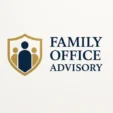Concierge, Real Assets & Lifestyle Administration #
Concierge, real assets, and lifestyle administration cover the operational services that support the everyday needs, comfort, and long-term asset preservation for UHNW families. Family offices often manage multiple residences, staff, travel arrangements, art collections, vehicles, yachts, aircraft access, and personal services. Professionalizing these functions improves efficiency, reduces risk, and ensures a consistent standard of service across all family touchpoints.
Context & Importance #
UHNW families typically maintain complex lifestyles spanning several countries, properties, staff members, and logistical demands. Without structured management, families risk financial leakage, misaligned service quality, employment compliance issues, and inadequate oversight of valuable physical assets. A well-designed lifestyle administration framework provides transparency, standardization, and protection for both the family and their physical holdings.
Core Components of Lifestyle Administration #
- Property management: Oversight of residences, renovations, maintenance, utilities, insurance, and security.
- Household staff management: Hiring, contracts, payroll, handbooks, training, and performance reviews.
- Travel & logistics: Itinerary planning, travel security, insurance, and vendor coordination.
- Asset management: Administration of art collections, jewelry, wine cellars, vehicles, yachts, or aircraft access arrangements.
- Lifestyle services: Event planning, health and wellness support, education coordination, and relocation services.
- Security coordination: Personal security protocols, vendor oversight, and emergency planning.
Real Assets: Governance & Controls #
Real assets often represent a significant portion of family wealth. Proper governance ensures they are maintained, insured, and operated efficiently to preserve long-term value and reduce financial and reputational risk.
- Documented asset registers: Detailed records for properties, art, vehicles, and luxury assets.
- Insurance reviews: Regular valuation updates and coverage assessments.
- Vendor oversight: Contracts, performance reviews, and cost controls.
- Compliance checks: Residency, tax, import/export rules, and licensing.
- Operational audits: Cost benchmarking and efficiency assessments.
Implementation & Best Practices #
- Centralize key information: Maintain a secure digital hub for contracts, maintenance logs, inventories, and insurance policies.
- Standardize household operations: Use checklists, schedules, and service manuals for staff.
- Define service levels: Set expectations for responsiveness, reporting, and vendor management.
- Perform background checks: Screen staff, contractors, and sensitive vendors rigorously.
- Integrate budgeting: Track costs for properties, staff, travel, and lifestyle services as part of the consolidated reporting process.
- Prioritize privacy & security: Enforce confidentiality agreements and secure communication protocols.
- Use specialized software: Property management tools, staff scheduling platforms, and digital inventories.
Common Challenges #
- High staff turnover and inconsistent service quality.
- Overspending due to poor vendor oversight or unclear budgets.
- Security vulnerabilities in homes or digital communications.
- Lack of standardized procedures across multiple residences.
- Untracked inventories of valuable assets (art, jewelry, wine).
- Compliance issues with employment, insurance, or licensing.
See Also #
- Vendor Management & Outsourcing Strategy
- Technology Infrastructure for Family Offices
- Cybersecurity & Data Privacy Controls
- Family Governance




